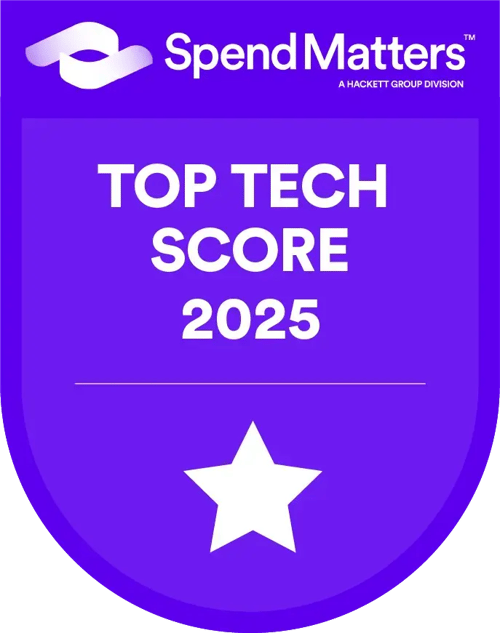
Sievo Culture
How to perform a full-remote (and successful) strategy process

Sammeli Sammalkorpi • Feb 9, 2021
A week before our strategy offsite was set to happen, we had to admit the facts. Due to the surging second wave of Covid-19, it would be irresponsible to organize our strategy meeting as a physical event. Instead, we would need to run it in full-remote mode. I was both disappointed of not being able to have social time with colleagues but also concerned about how we could run an effective strategy discussion fully remotely. We were planning to discuss complex, multi-faceted topics that would have serious influence on our future success as a company. Doing it fully remotely seemed to be set up to fail.
How wrong I was! This year’s strategy process was the most effective and transparent process this far. Not despite of, but because of, the full-remote setup. I will explain why, and maybe it will also be beneficial for someone else in the future.
The strategy process started in a typical way.
To start with, we reviewed which elements of our strategy we wanted to review in this exercise and set up working groups for each element. These working groups worked for 9 weeks on detailed analyses of those elements – sizing the market, understanding the competition, interviewing internal stakeholders and customers, engaging with analysts, and having constructive debate on various aspects. When we set up these working groups, we wanted to engage a large number of Sievonians, representing different functions (e.g. sales, marketing, products, customers), different locations (our Helsinki and Chicago hubs), and also people holding different roles in organization, from CEO to subject matter experts. The findings were, unsurprisingly, summarized in PowerPoint with far too many slides for outsiders to read and absorb.
But here comes the interesting part. When we considered how to facilitate effective discussions between 22 persons in full-remote setup, we knew we had to think of something new. How? We decided to hold two four-hour Teams-meeting sessions. Phew, that sounds boring and that cannot be efficient, you say? Let me prove you wrong by explaining how we did it and by giving you 10 benefits of the process.
First, we had two four-hour Teams-meeting sessions to vote on decision statements.
- As preparation, working groups prepared, and participants read, roughly 50 decision statements that were designed to force a clear decision/direction, each supported with underlying data and insights. For example, “in Europe, our key markets are Germany, France, and UK”.
- We let all 22 participants state their agreement or disagreement (“votes”) to set decision statements simply using an online excel.
- Everybody could see as the votes were placed in the excel in real-time – this was actually quite fun to see. It was also crucial in order to get various, concrete, and even provocative opinions out.
- When the votes were cast, it was easy to see which decision statements got strong consensus and which did not. This also meant that we did not need to waste precious common time to discuss the ones that were clear. As in some cases individuals had outlier opinions, we called them out to justify their opinions. Sometimes these were more comments on sidelines, but sometimes they contained highly valuable insights that also led to substantial change in people’s opinion and/or conclusion. Sometimes consensus did not emerge – and issues were parked.
Then, we played a virtual chip investment game.
- At the end of the two four-hour sessions, we also ran a virtual chip investment game. Basically, we asked all the participants, based on all of the discussions this far, to place their 50 virtual investment chips across 12 different potential investment areas. If earlier in the process it was relatively easy to get excited about all opportunities, this forced people to prioritize. Given a limited amount of chips, people had to make hard calls on what they only kind of believed in and what they really believed in.
We shared all of the information to everyone at Sievo.
- We summarized the results, pointing out Decision Statements that were de facto approved, ones that were disapproved and ones that would still require further discussion in different forums.
- We recorded the 8 hours of meetings and provided access to these and the voting results for all Sievonians.
Phew! What a process. So, what were the benefits of the remote strategy process? I will give you 10.
- We were effective as we effectively agreed on most of the Decision Statements. When there was strong consensus, we didn’t use common time to just babble over it. The fact that it’s difficult to get interaction in a 22-person online meeting forced us to find different ways to get input – which turned out to be a very effective process booster.
- There is a high commitment to the made decisions due to the transparent nature of the process. Even if a participant disagrees with a certain conclusion, if all 21 smart minds think differently, you are likely to accept the conclusion even if you still feel otherwise. Also, in this format, we could effectively include a large number of participants.
- Signaling openness was possible by being able to share the recordings and votes to everyone, even though they would not be viewed by many.
- Natural exposure to other functions’ views was enabled. For all of us, our views are shaped by the context we are exposed to. With this process each person was helpfully reminded of and exposed to other functions’ views, limiting bias. I believe this process strengthened the recognition that we’re all working to a joint benefit.
- A balanced opportunity was given for everybody to provide their views (not just the extroverts). In traditional physical meetings, it is typically the vocal extroverts (like me :) ) that take most of the air-time. Here the voting process ensured input from everybody, and the process of calling out outlier voters ensured that it’s not only the most aggressive speakers that get to speak. Which brings us to the next point.
- Not having to choose who to listen to. As everyone practically had one vote and everyone was heard, there was no need to rely only on the opinions of the CEO or the expert in a specific field. In normal “discussion only” meetings it’s harder to reflect – during and after the meeting – who really should be listened to. In this setup, this issue was easier.
- Attention from all participants was ensured with the act of voting. A 4-hour Teams-meeting is not the most engaging medium, but since everybody was involved throughout those 4 hours, we ensured attention.
- Premature and too fast conclusions were avoided. In a typical group discussion, it’s pretty easy for the working group to interpret the conclusion to their favor, effectively ignoring opposing views. In this process this was difficult to do if most of the votes pointed to a different direction.
- Judgment-heavy decision-making was able to be encouraged. In many companies in general, in order to get a decision through, it requires a carefully laid out business case, summarized nicely in a beautiful presentation, and delivered in a confident, convincing fashion. I believe such processes give unfair advantage to proposals/people who (i) happily exaggerate benefits; (ii) can make nice ppts; and (iii) have too much confidence (think your typical strategy consultant). Instead, good decision making should primarily rely on the judgment of individuals who have worked with the domain for years and have a lot of nuanced understanding that is hard to capture in nice slides. This was now possible.
- We got to do it in our sweatpants. No explanation needed.
There can, naturally, also be challenges with the approach.
- The danger of group-thinking is visible. With the voting process, more radical or provocative ideas are likely to get less support. We pursued to mitigate this risk by two actions: (i) giving more airtime to outlier voters to make their point, and influence the group’s opinion; (ii) pointing out that voting is an input mechanism, not a decision-making mechanism.
- There is a danger of ignorant votes. In our process, each participant has one vote. While we encouraged people to NOT cast a vote when they felt that they do not have a justified opinion, this happened a bit more often than what would be ideal. However, when analyzing the voting results, we also looked at the results grouped by different functions, and that was often even more informative than just looking at the results.
- We could not have social time together. This is actually the biggest downside for me. :(
In general, the remote strategy process was a success, and we may very well end up using these elements in the future as well. I think it represents one of the many good things that came out of this Covid-time, of which we sometimes need a reminder. :)
Photo by Sebastian Voortman from Pexels
Open Positions
Welcome to explore our open job opportunities around the world
- Position
- Location
- Apply Before

